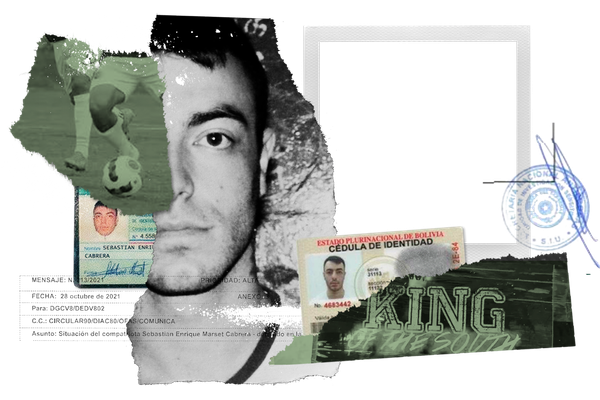An investigation into the rise of what some call "Pretendians"

In June of 2018, artist Gina Adams took the stage at Dartmouth College in New Hampshire. She talked nervously about being selected as summer artist-in-residence for the department of studio art, then greeted the audience in Anishinaabemowin, and talked about her Ojibwe grandfather. The following year, the Emily Carr University of Art & Design in Vancouver posted five positions, and Adams was hired for one of them. She was described as “a contemporary Indigenous hybrid artist of Ojibwa Anishinaabe and Lakota descent." In March of 2021, however, a Twitter account called NoMoreRedFace posted a tweet that read: “Would you FAKE a residential school survivor backstory to sell $35,000 quilts and land a tenure track professorship in Aboriginal art?” The tweet then named Gina Adams, saying that “research suggests” she did just that.
How China's imperial palace, the Forbidden City, became a public museum
When Zhu Di, the third emperor of the Ming dynasty, ordered a grand palace built in Beijing in 1406, he probably didn’t envision vast crowds of commoners lining up to enter every weekend. The palace, which became known as the Forbidden City, was the exclusive residence of 28 emperors from the Ming and Qing dynasties. It became a museum in 1925, and the story of how it got there is filled with intrigue and disaster — at one point, administrators decided to make an inventory of all the priceless artifacts in the palace's collection, but many couldn't be found. Hearing the news, many of the eunuchs who used to be employed in the city panicked, since they often smuggled treasures from the palace and sold them to antique dealers in the city. In order to cover their tracks, they set the palace on fire.

Riding a bicycle across the length of Africa
Mckenzie Barney writes about an epic cycling journey from Cairo to Cape Town: "Riding from the Pyramids of Giza to Table Mountain was my dream of a decade. I chose a bare-bones expedition. Plans and timelines aside. To travel for travel’s sake. To sink my teeth into the truth and toss the rest by the wayside. I started from the Egyptian pyramids with just my kiwi partner, the most efficient machines ever created, and the entire African continent ahead. Southbound and on edge, we began our trans-continental cycling journey dissecting Egypt, Sudan, Ethiopia, Kenya, Tanzania, Zambia, Botswana, Namibia, and South Africa. Disillusioned with itineraries and silver capsule time travel, I longed to find the link between two points on the corners of an atlas and experience the daily life of foreign cultures far beyond the tourist traps."

Those famous Easter Island head sculptures also have bodies
If you're familiar with Easter Island, you've undoubtedly heard of the famous Easter Island heads. While these massive monoliths are among the world's most famous sculptures, their household name is actually a misnomer, as each figure, or moai, also has a hidden body. Rapa Nui, or Easter Island, is a remote volcanic island located in Oceania's Polynesian Triangle. The isle is particularly famous for its collection of nearly 1,000 stone statues. Crafted by the Rapa Nui people between 1250 and 1500, these monumental sculptures have been shrouded in mystery for centuries. However, recently, researchers have revealed new information about the iconic Easter Island heads, including the surprising fact that they are actually full-length figures.

Researchers say rats like to dance to Lady Gaga
Blasting Lady Gaga in your house? There’s a chance a nearby rat might be bopping along with you, a new study suggests. Rats can recognize and move to the rhythm of a beat, according to a University of Tokyo study published in the peer-reviewed journal Science Advances. Only humans had been thought to innately possess the ability, according to the university. Researchers played Mozart, Lady Gaga’s “Born This Way,” Michael Jackson’s “Beat It,” Queen’s “Another One Bites the Dust” and "Sugar" by Maroon 5 for rats and measured their head movements before comparing their results to the humans who participated in the study. They played the music at four different tempos and found rats best synchronized their head bops to music in the 120 to 140 beats-per-minute range, much like humans.

Paper peepshows were the Victorian version of virtual reality
Paper peepshows, also known as peek-a-boo books, peepshow books, and tunnel books, are a special form of immersive storytelling. They’re made up of several pages bound together by folded pieces of paper on each side. When folded out, these books are accordion-looking. Each page is carefully crafted with cutouts to reveal the page behind it, adding to the illusion of depth and perspective. The viewer looks through the small hole in the front, enveloping themselves in a tiny, three-dimensional scene that feels life-sized. As the Victoria and Albert Museum describes, traveling peepshow men “would charge adults and children to look inside the box, while commenting on the scene depicted and bringing it to life.” Peepshows were inspired by the theatrical stage.

Russian dancers make it look like they're floating
In the Russian dance Berezka, women move with short steps, so short that they look like they're floating. pic.twitter.com/l3AegK2TA1
— Historic Vids (@historyinmemes) November 16, 2022

